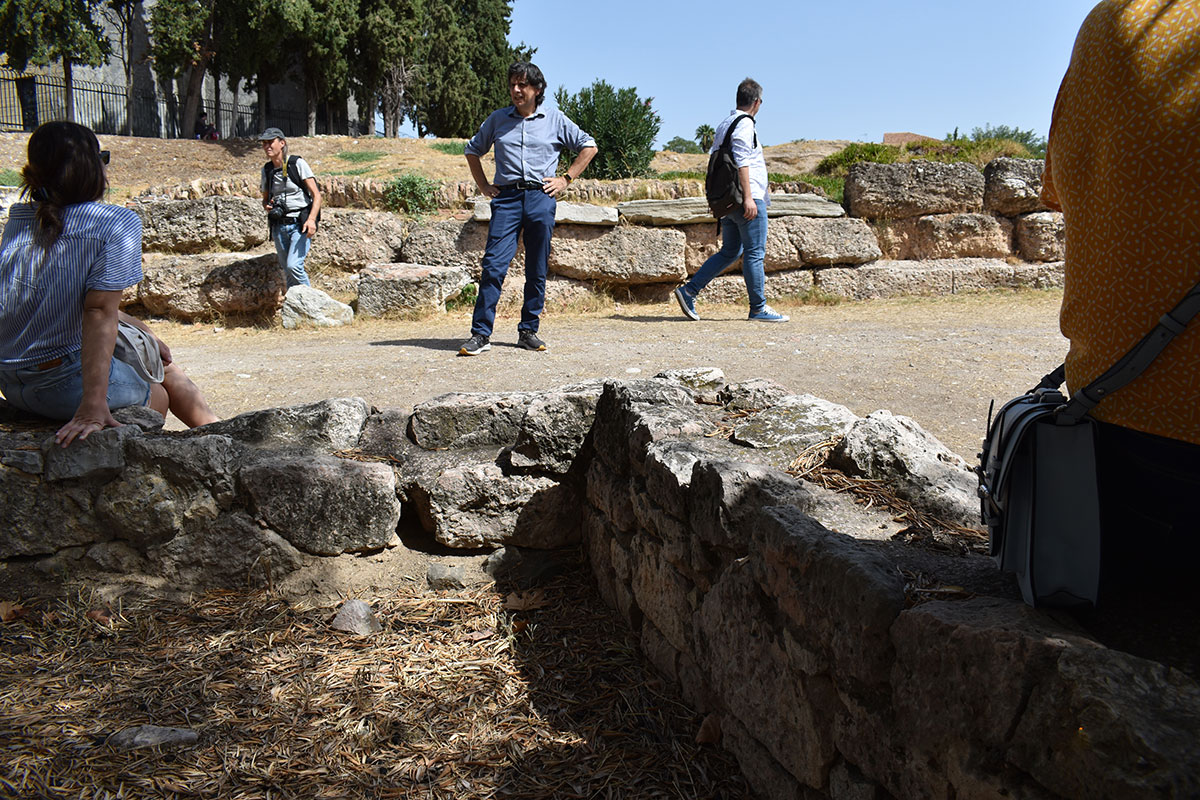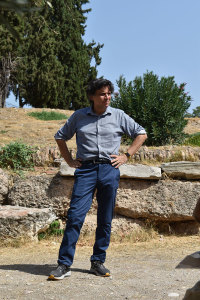ART CITIES:Athens-Urban Mythology
 Taught by Plato, Aristotles was the founder of the Lyceum, the Peripatetic school of philosophy and the Aristotelian tradition. His writings cover many subjects including physics, biology, zoology, metaphysics, logic, ethics, aesthetics, poetry, theatre, music, rhetoric, psychology, linguistics, economics, politics, meteorology, geology and government. His philosophy has exerted a unique influence on almost every form of knowledge in the West and it continues to be a subject of contemporary philosophical discussion.
Taught by Plato, Aristotles was the founder of the Lyceum, the Peripatetic school of philosophy and the Aristotelian tradition. His writings cover many subjects including physics, biology, zoology, metaphysics, logic, ethics, aesthetics, poetry, theatre, music, rhetoric, psychology, linguistics, economics, politics, meteorology, geology and government. His philosophy has exerted a unique influence on almost every form of knowledge in the West and it continues to be a subject of contemporary philosophical discussion.
By Efi Michalarou
Photo: Dimitris Lempesis Archive

The name Peripatetic school, belongs to a series of philosophers of whom Aristotle was the first and by far the most significant. Geographically the school was located in a sanctuary dedicated to Apollo, called the Lyceum, a public space outside the city wall of Athens but within easy walking distance. For the exhibition-action “Urban Mythology”, 10 artists have been called to create 9 ephemeral artworks in the public urban space, in dialogue with Iera Odos. In this charged place, rich in myths and archeological traces, which today is a living multinational mosaic full of contrasts, the original urban interventions of the artists, with their ephemeral and fragile character, function as modern “anti-monuments”, that will remain in the city after the end of the exhibition and will be destroyed by time and weather. Among the other monuments in Kerameikos is Tritoatreion that is surrounded by a very low brick wall and inside there is a sacred grove to which access was forbidden as informed by the stone landmark found in Kerameikos with the inscription “ΗΟΡΟΣ ΗΙΕΡΟ ΤΡΙΤΟΠΑΤΡΕΟΝ HABATON” (Abaton). As part of “Urban Mythology” and Inspired by the abaton of the Tritopatreio in the area of Kerameikos, one of the primitive places of worship in Attica, Giannis Ziogas creates the collective walking event entitled “The abatons of the Iera Odos”. With the participants, that identifies places that can be characterized as abatons on the route from Kerameikos to the Agricultural University of Athens. In the walking action of October 3, the abatons discovered by four artists who responded to the open invitation to negotiate the question addressed by Giannis Ziogas “Which are the abatons of Sacred Way?”. The five artists, walking together with the audience, go through the process, moving from one abaton to the next, leaving in each of them posters that identify it as such and forming traces of abaton landmarks in the city. Evangelia Basdekis activates points in the harsh reality-condition of Iera odos through daydreaming, poetry … the alternative view, that is, the experience of this space. Dimitra Nikolopoulou first meets one of the hills of Kerameikos where children play and form the abaton of the grassrrots groups of a society and the spatial exclusions of the public landscape. Then, on the outskirts of the contemporary Iera Odos, she meets the sex shops, the queer designations. Is the body as the meeting point of interpretation and action immortal? Angelos Skourtis and Vilma, are companions for 41 years, they will stand at the points where their Fears and Anxieties are located (making passable the abatonσ of their soul, as the artist mention) on the rest of their life journey in relation to the surprises and trials that time has in store for them. Kleopatra Tsali will investigate the extent to which the area of Iera Odos is accessible or abaton (impassable) for the wandering female body. Are women regular users of the public sphere? Do they have the right to look, observe or they are define themselves through the prohibitions of the male gaze?
Participating Artists: Giannis Ziogas, Evangelia Basdekis, Dimitra Nikolopoulou, Angelos Skourtis & Vilma and Kleopatra Tsali
Photo: Giannis Ziogas in front of Tritoatreion, Photo: © Dimitris Lempesis
Info: Organizing team: Constantinos Constantinidis, Artemis Potamianou, Delia Potamianou and Bia Papadopoulou, Curators: Bia Papadopoulou and Artemis Potamianou, Meeting place: Entrance of Kerameikos Archaeological Site, Ermou 148, Athens, Greece, Date: 3/10/2021,Hour: 11:00, www.lab4arts.eu
